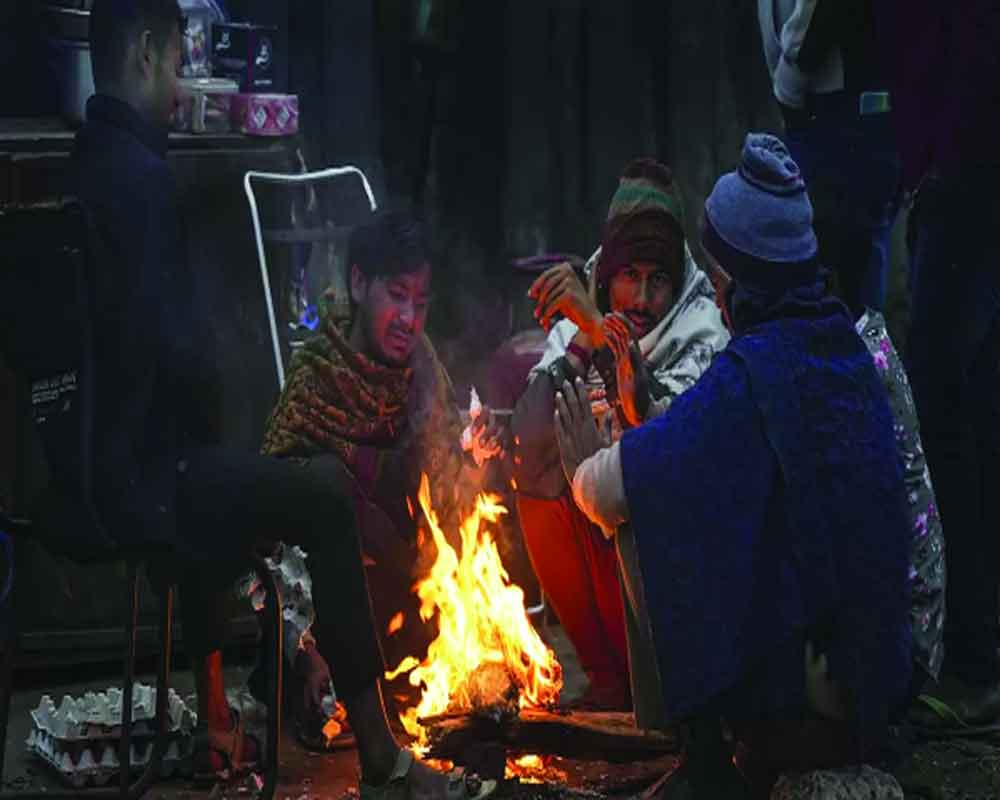There is no respite from the bone-chilling winter as the people in Delhi-NCR woke up to yet another cold morning on the last day of the year, with moderate to dense fog amid the festive atmosphere causing disruptions in transportation and affecting several trains.
The minimum temperature was recorded at 11.7 degrees celsius, five notches above the season's average and the maximum temperature stood at 15.9 degrees celsius, five notches below the normal. The city's average Air Quality Index (AQI) was recorded at 382 in the 'very poor' category at 4 pm as compared to 400 on Saturday. The India Meteorological Department (IMD), meanwhile, said the mercury will dip further in the first week of January 2024. The minimum temperature is expected to remain in the range of 10 to 7 degrees Celsius in the national Capital at the Safdarjung Observatory. The average maximum and minimum temperatures for December so far this year are higher than they were for the month in recent years.
IMD data showed the average AQI for the month is worse than it has been in recent years — in 2022, the average for December was 319, while it was 336 in 2021, 332 in 2020, and 337 in 2019. The last time a higher average was recorded was in 2018 — 360.
Meanwhile, the Air Quality Index (AQI) in Delhi has reached the 'severe' category, according to the Central Pollution Control Board (CPCB), exacerbating concerns about air pollution and visibility issues during the period of dense fog. The noxious conditions, forecasts warned, are likely to persist over at least three more days, with air quality likely to worsen further if people decide to burst firecrackers New Year’s Eve.
The deterioration in air quality appeared to be on account of the low day-time temperature that the city has seen over the last two days.
Several trains, including both local and long-distance services, experienced disruptions from two to seven hours due to foggy conditions., leaving passengers stranded and frustrated. As many as 23 trains in the Delhi area are reported to be late behind schedule, according to Indian Railways. Trains that are running late include Puri- New Delhi Purushottam Express, Kanpur-New Delhi Shramshakti, Howrah-New Delhi Poorva Express, Saharsa- New Delhi Vaishali Express, Rewa-Anand Vihar Express, Allahabad- New Delhi Prayagarj Express, Azamgarh — Delhi Kaifiyat Express, Bhagalpur — Anand Vihar Vikramshila, Rajendranagar — New Delhi Sampoorn Kranti.
The visuals from Subroto Park, DND flyover, and India Gate showed the vehicular movement crippling owing to less visibility. Despite the rise in pollution levels, the dense fog that had engulfed Delhi over the past five days — throwing flights, trains and road traffic into chaos — finally appeared to ease.
According to IMD, there was a significant improvement in visibility at the IGI Airport on Sunday. Runway Visual Ranges (RVRs) now range from 500 to 800 metres, indicating improved aviation conditions Very dense' fog is when visibility is between 0 and 50 metres, 51 and 200 metres is 'dense', 201 and 500 metres 'moderate', and 501 and 1,000 metres 'shallow', it said.
The IMD has issued a weather advisory forecasting cold wave conditions alongwith very dense fog conditions with visibility less than 50 meters over many parts of Punjab from late evening to the next day morning, extending until January 4. West Uttar Pradesh is expected to experience very dense fog during midnight and morning hours from December 30 to January 4.
In the Haryana-Chandigarh-Delhi region, as well as East Uttar Pradesh, very dense fog is anticipated during midnight and morning hours till January 1.


























